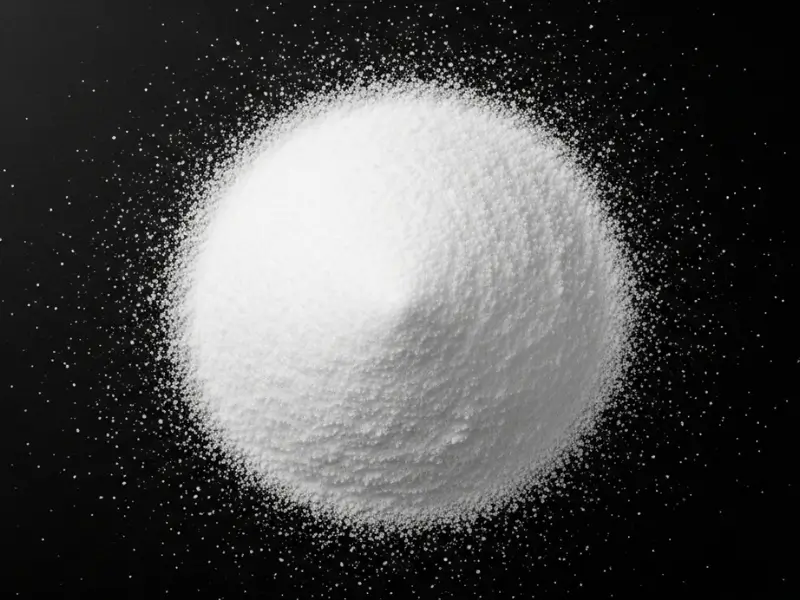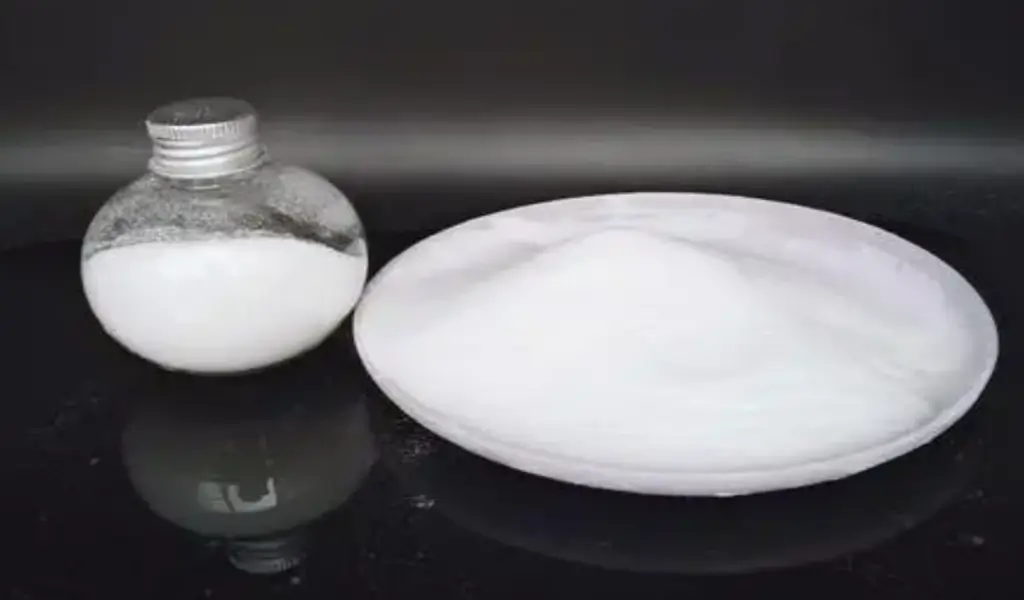What is chlorosulfonated polyethylene resin and its uses? This question is increasingly relevant in industries that demand versatile, durable, and resilient materials. Chlorosulfonated polyethylene (CSPE) resin is a synthetic polymer that has carved out a vital role in various sectors due to its unique properties and applications. Understanding its significance and how it functions is crucial for professionals involved in engineering, manufacturing, and construction contexts. This article aims to explore the myriad benefits and applications of CSPE resin, providing thorough insights into its chemical properties, production methods, market demand, and environmental impact.
1. Introduction to Chlorosulfonated Polyethylene Resin
Chlorosulfonated polyethylene resin is widely recognized for its excellent durability and resistance to harsh environmental conditions. But here’s the kicker: while most people know about general plastics, many are not aware of the specific advantages that CSPE provides. Introduced in the mid-20th century, this versatile polymer is essentially a modified version of polyethylene that has undergone chlorosulfonation. This process not only enhances the mechanical properties of the base material but also equips it with superior resistance to chemicals, UV radiation, and extreme temperatures.
Industries such as automotive, roofing, and electrical systems have adopted chlorosulfonated polyethylene resin due to its resilience and performance reliability. For instance, in roofing applications, CSPE sheets can withstand prolonged exposure to sunlight and water, making them an ideal choice for durable roofing solutions—as we’ve discussed in “Why CSM’s UV & Weather Resistance Make It Ideal for Outdoor Use.”. Additionally, in the automotive sector, CSPE components exhibit excellent toughness and flexibility, providing essential protection for various vehicle parts against environmental stressors.
In concluding, chlorosulfonated polyethylene resin has emerged as a go-to material for businesses looking to enhance the durability and sustainability of their products. In the following sections, we will dive deeper into its chemical composition and properties, production processes, applications, and environmental impacts to provide a well-rounded understanding of this crucial material.
| Property | CSPE Resin | Importance |
|---|---|---|
| Durability | High | Long-lasting applications |
| Chemical Resistance | Excellent | Suitable for harsh environments |
| UV Resistance | Superior | Ideal for outdoor applications |
2. Chemical Composition and Properties
Understanding the chemical composition of chlorosulfonated polyethylene resin reveals why it is a preferred material in various applications. What’s the real story? CSPE is derived from polyethylene, with chlorine and sulfur dioxide incorporated into its polymer structure through a controlled reaction. This alteration not only modifies the physical properties of polyethylene but also significantly enhances its functionality.
The resulting material showcases several beneficial properties. For instance, the addition of chlorine enhances the material’s chemical resistance, protecting it from corrosive substances such as acids and solvents. Meanwhile, the sulfonyl functional groups introduced through chlorosulfonation improve the overall physical properties, including tensile strength, elongation, and resilience against abrasion.
Moreover, CSPE exhibits excellent thermal stability, allowing it to maintain its integrity even in extreme temperature conditions ranging from -20°C to +90°C. This thermal resilience makes it suitable for applications ranging from automotive components to roofing sheets that endure temperature fluctuations.
In terms of flexibility, chlorosulfonated polyethylene resin stands out among other polymers. Its ability to deform without cracking allows it to be easily molded into various shapes and forms. The result is a versatile material that can be utilized in numerous applications while ensuring long-lasting performance.
| Chemical Property | CSPE Resin | Benefit |
|---|---|---|
| Chlorine Content | Moderate | Enhanced chemical resistance |
| Sulfonyl Groups | Present | Improved tensile strength |
| Temperature Range | -20°C to +90°C | Versatile use in diverse applications |
3. Production Process of CSPE
The production of chlorosulfonated polyethylene resin involves a unique process that transforms standard polyethylene into a high-performance material. This is where it gets interesting… The core of CSPE production lies in the chlorosulfonation of polyethylene, which occurs through a combination of chlorine gas and sulfur dioxide under carefully controlled conditions.
Initially, high-density polyethylene (HDPE) is produced through the polymerization of ethylene. Once this base polymer is ready, it undergoes chlorosulfonation. This involves exposing the HDPE to chlorine gas and sulfur dioxide, usually in a solvent that facilitates the reaction. The chlorosulfonation process alters the molecular structure of the polymer, introducing chlorine and sulfonyl groups into the mix, thus enhancing its properties.
The quality of the resulting CSPE resin significantly depends on factors like the concentration of chlorine and sulfur dioxide, temperature, and reaction time. An optimized process yields a resin that possesses excellent mechanical and chemical properties, making it suitable for various applications.
Additionally, manufacturers are increasingly adopting sustainable practices, ensuring that the production process minimizes environmental impacts. Efforts are being made to reduce energy consumption and to recycle waste materials generated during production. As a result, the production of chlorosulfonated polyethylene holds promise not just for performance but also for sustainability, contributing positively to industry standards.
| Production Step | Description | Importance |
|---|---|---|
| Polymerization of Ethylene | Forms the base material | Sets foundation for CSPE properties |
| Chlorosulfonation | Introduces enhancements | Creates a high-performance polymer |
| Quality Control | Ensures optimal formulation | Guarantees product consistency and reliability |
4. Applications of Chlorosulfonated Polyethylene Resin
Chlorosulfonated polyethylene resin has a wide array of applications due to its outstanding properties. Ready for the good part? This versatility makes it suitable for industries such as construction, automotive, and electrical systems.
In construction, CSPE is extensively used for roofing membranes and coatings. The combination of durability, UV resistance, and flexibility allows for effective protection in harsh weather conditions. Not only does CSPE provide steadfast roofing solutions, but it also contributes to energy efficiency by reflecting heat, thereby reducing energy costs for building owners.
In the automotive sector, CSPE resin is utilized in seals, gaskets, and protective covers. Its excellence in withstanding extreme weather, chemical exposure, and mechanical wear makes it a top choice for manufacturers. For instance, components made from CSPE do not degrade under high heat or exposure to automotive fluids, resulting in longer-lasting parts.
Additionally, CSPE is used in electrical insulation, especially for cables and connectors. Due to its outstanding dielectric properties, CSPE ensures reliable performance in various electrical applications. For example, when insulated with CSPE, cables can perform flawlessly in extreme conditions without losing functionality.—similar to the benefits covered in “How CSPE Sheathed Cables Provide Key Benefits.”
The following table summarizes key applications of chlorosulfonated polyethylene resin in various industries.
| Industry | Application | Benefits |
|---|---|---|
| Construction | Roofing membranes | UV resistance, longevity |
| Automotive | Seals and gaskets | Chemical resistance, durability |
| Electrical | Cable insulation | High dielectric properties |
5. Benefits of Using CSPE Resin
The benefits of using chlorosulfonated polyethylene resin are manifold, making it a material of choice for many industries. But here’s the kicker: its advantages go beyond just durability. One of the primary benefits is its exceptional weather resistance. CSPE maintains structural integrity and appearance when exposed to sunlight, rain, and temperature changes. This quality makes it particularly valuable for outdoor applications, such as roofing, where materials are constantly subjected to environmental stresses.
Another significant advantage is its chemical resistance. CSPE is effective against a wide range of substances, including acids, bases, and oils. This characteristic ensures longevity in applications where exposure to corrosive elements is a concern, particularly in industrial settings where heavy machinery operates with various chemicals.
Furthermore, CSPE also exhibits impressive flame resistance, making it suitable for applications that require compliance with stringent fire safety standards. Cables insulated with CSPE will not ignite easily and can self-extinguish, providing a safety advantage in buildings and vehicles.
The economic implications cannot be overlooked either. Businesses that invest in CSPE products may experience lower maintenance costs due to the material’s durability, resulting in savings over the long term.
| Benefit | Description | Impact |
|---|---|---|
| Weather Resistance | Withstands UV and rain exposure | Enhances longevity of outdoor installations |
| Chemical Resistance | Resilient to acids, bases, and oils | Reduces degradation in industrial settings |
| Flame Resistance | Low flammability and self-extinguishing | Ensures safety in fire-prone environments |
6. Comparison with Other Polymer Materials
Comparing chlorosulfonated polyethylene resin with other polymer materials sheds light on its unique characteristics. What’s the real story? When evaluated alongside commonly used plastics like PVC and XLPE (cross-linked polyethylene), CSPE emerges favorably in several aspects.
Firstly, in terms of chemical resistance, CSPE shows superior resilience against solvents and acids compared to PVC, which tends to degrade when exposed to harsh chemicals. For example, in environments with highly corrosive substances, CSPE outlasts PVC and maintains its performance.
Secondly, when it comes to thermal stability, CSPE has a broader operational temperature range. While PVC is typically limited in high-heat situations, CSPE can function effectively in temperatures from -20°C up to 90°C, making it suitable for extreme applications like automotive parts where resilience to heat is crucial.
Additionally, sound absorption is another area where CSPE outperforms its counterparts. Unlike PVC that transmits sound, CSPE can be formulated to exhibit sound absorption characteristics, which is beneficial for acoustic applications such as insulation in buildings.
This competitive comparison highlights CSPE’s superiority in many applications; however, it is essential to consider cost factors as well. The higher price point of CSPE compared to PVC may deter some cost-conscious companies, but the long-term savings through reduced maintenance and replacements invariably justify the higher initial investment.
| Material | Chemical Resistance | Thermal Range | Sound Absorption |
|---|---|---|---|
| CSPE | Excellent | -20°C to +90°C | Good |
| PVC | Moderate | Limited | Poor |
| XLPE | Good | -40°C to +90°C | Moderate |
7. Environmental Impact of CSPE
As concerns over sustainability and environmental impact continue to grow, understanding the lifecycle of chlorosulfonated polyethylene resin becomes paramount. This is where it gets interesting… While CSPE is an outstanding performer in various applications, its production and disposal have been subjects of scrutiny in the context of environmental responsibility.
The production of CSPE generally requires significant energy input, especially during the chlorosulfonation process. However, many manufacturers are starting to adopt eco-friendly practices that minimize energy consumption and waste generation. For instance, utilizing renewable energy sources and developing more efficient processes can help lessen the environmental burden associated with production.
Regarding disposal, CSPE is not biodegradable, which poses challenges in managing end-of-life products. Nevertheless, ongoing research into recycling options for CSPE is showing promise.Companies are exploring ways to reprocess CSPE waste into new products or alongside other compatible materials, promoting circular economy principles.
Moreover, CSPE’s long lifespan and reduced need for replacements due to its durability can equate to fewer resources consumed overall—an advantage when considering its total environmental impact. When used in roofing and other long-term applications, the longevity of CSPE products leads to a reduction in waste over time.
| Environmental Aspect | Current Status | Potential Improvements |
|---|---|---|
| Production Energy Consumption | High | Shift to renewable energy options |
| Biodegradability | Not biodegradable | Research into recycling capabilities |
| Lifespan | Long | Reduced frequency of replacements |
8. Safety Considerations
Safety is a critical aspect in the application of chlorosulfonated polyethylene resin, with various factors to consider across the production and utilization processes. What’s the real story? One primary concern for employees working with CSPE at manufacturing sites involves chemical exposure during production. Manufacturers must implement stringent safety protocols, including personal protective equipment (PPE) and ventilation systems, to mitigate risks associated with chlorine and sulfur dioxide exposure.
Additionally, CSPE products must adhere to recognized safety standards to ensure compliance in their applications. For instance, in electrical settings, CSPE must meet the National Fire Protection Association (NFPA) regulations regarding flame retardancy and electrical insulation properties. This compliance is essential in assuring both producers and end-users of the material’s safety.
For end-users, incorporating CSPE into buildings or automotive components provides peace of mind given its low flammability ratings. CSPE’s ability to self-extinguish under fire conditions minimizes the risk of catastrophic failures in applications where fire safety is paramount.
To further enhance safety, businesses employing CSPE should conduct regular inspections and maintenance of products, ensuring they remain in optimal condition and free from damage that could compromise safety features.
| Safety Concern | Description | Mitigation Strategies |
|---|---|---|
| Chemical Exposure | Risks during production | Use of PPE and effective ventilation |
| Compliance with Standards | Adherence to safety regulations | Regular audits to ensure compliance |
| Flammability | Risk of ignition | Use of flame-retardant materials |
9. Market Demand and Trends
The market demand for chlorosulfonated polyethylene resin is on the rise, fueled by its extensive application across industries. Ready for the good part? As industries continuously seek higher performance materials, the need for CSPE is being further driven by trends emphasizing sustainability and efficiency. Market analysis indicates strong growth in sectors utilizing CSPE, particularly in construction, automotive, and electrical markets.
In construction, rising demand for sustainable roofing materials is encouraging the adoption of CSPE membranes, which boast longevity and energy efficiency. As more builders recognize the need to invest in durable and environmentally friendly materials, CSPE is becoming a preferred choice, contributing to a greener building strategy.
The automotive industry also contributes to CSPE’s rising market presence due to its effective use in vehicles designed for eco-friendliness. As manufacturers look to enhance the performance of electric vehicles and other energy-efficient options, CSPE’s lightweight yet durable characteristics align perfectly with their goals.
Moreover, advancements in recycling technologies and initiatives aimed at reducing waste are increasingly important in maintaining CSPE’s relevance within competitive markets. As companies strive for sustainable materials, those that can provide insights into cost-effective recycling solutions for CSPE will stand out.
| Market Sector | Demand Drivers | Trends |
|---|---|---|
| Construction | Sustainable roofing materials | Growth in green building standards |
| Automotive | Performance enhancement in eco-cars | Push for lightweight components |
| Electrical | Need for reliable insulation | Innovations in recycling and sustainability |
10. Case Studies: Successful Applications of CSPE
Successful applications of chlorosulfonated polyethylene resin can be seen across various industries, showcasing its versatility and performance. But here’s the kicker: highlighting specific case studies demonstrates the impactful results achieved with CSPE.
One notable example is its use in the roofing industry by a leading construction company for the application of CSPE roofing membranes. Their project involved a large commercial complex faced with extreme weather conditions. By utilizing CSPE membranes, the company achieved a durable rooftop that remained intact through heavy winds and torrential rain, resulting in minimal maintenance costs over the years.
In the automotive sector, a major vehicle manufacturer turned to CSPE for its insulation components, which needed to perform under high-temperature conditions and resist mechanical wear. By integrating CSPE, the efficiency of the components improved, leading to longer-lasting vehicle parts that enhanced both performance and safety.
Another case can be observed in the electrical industry, where a manufacturer utilized CSPE for cabling applications. The cables were subjected to rigorous testing for both chemical and thermal resistance. The resilience demonstrated by CSPE resulted in cables that exceeded industry safety standards, thus allowing for broader market acceptance and client satisfaction.
These case studies underscore the practical effectiveness of CSPE across various sectors, reinforcing its status as a reliable choice for critical applications.
| Industry | Application | Outcome |
|---|---|---|
| Construction | Roofing membranes | Durable, low maintenance over time |
| Automotive | Insulation components | Enhanced efficiency and durability |
| Electrical | Cable insulation | Exceeded safety standards in testing |
11. Challenges and Limitations of CSPE
Despite its many advantages, chlorosulfonated polyethylene resin is not without its challenges and limitations. What’s the real story? While CSPE’s unique properties make it a standout choice for various applications, there are factors that professionals must consider when integrating this material.
One of the primary challenges lies in its cost. CSPE tends to have a higher price point than more conventional materials like PVC or basic polyethylene. This cost factor can influence decisions, particularly in projects with tight budgets. However, many companies recognize that the long-term benefits justify the initial investment due to reduced maintenance needs and longer lifespans.
Another limitation to consider is the production energy consumption associated with CSPE. The chlorosulfonation process, while creating a high-performance resin, can be energy-intensive. As sustainability becomes a priority, manufacturers are under pressure to find ways to reduce energy usage during production and enhance overall environmental efficiency.
Additionally, despite the material’s durability, extreme mechanical stress can lead to deformation under certain conditions. Proper application, with an understanding of temperature ranges and the forces applied, is vital for ensuring optimal performance.
Awareness of these challenges allows businesses to make informed choices while embracing the benefits of CSPE, ensuring a practical approach that maximizes efficiency and sustainability.
| Challenge | Description | Considerations |
|---|---|---|
| Higher Cost | More expensive than alternatives | Long-term savings may justify investment |
| Energy Consumption | Intensive production process | Need for sustainable practices |
| Mechanical Stress | Risk of deformation | Proper application guidelines are crucial |
12. Future of Chlorosulfonated Polyethylene Resin
The future of chlorosulfonated polyethylene resin looks promising, with ongoing innovations and growing awareness of its benefits. Ready for the good part? As industries evolve, so too does the functionality and application of CSPE. One significant trend is the integration of smart technologies, where CSPE products could include monitoring capabilities. This innovation can empower users to track performance metrics in real-time, allowing for proactive maintenance and optimization.
Moreover, researchers are focusing on green chemistry approaches to produce CSPE more sustainably. By developing new formulations that utilize renewable resources, companies can enhance the material’s appeal and compliance with environmental standards.
The demand for circular economy solutions also drives the exploration for efficient recycling processes and methods to reclaim CSPE materials. These innovations align with global efforts to reduce waste and improve sustainability practices across all industries.
As companies increasingly prioritize environmental responsibility in their operations, those harnessing the potential of chlorosulfonated polyethylene resin—while focusing on sustainability—will be well-positioned for success in the market.
| Future Trends | Description | Potential Impact |
|---|---|---|
| Integration of Smart Tech | Monitoring capabilities in CSPE products | Enhanced performance tracking |
| Sustainable Production | Focus on green chemistry | Alignment with environmental standards |
| Recycling Innovations | Efficient reclamation methods | Supports circular economy initiatives |
13. Expert Opinions and Insights
Insights from industry experts shed light on the value of chlorosulfonated polyethylene resin, particularly regarding its applications and future potential. What’s the real story? Experts note that while CSPE is already recognized for its versatility, ongoing advancements have the potential to broaden its use, particularly in sustainability-driven projects.
An industry leader specializing in green building materials stated that the push for sustainable solutions makes CSPE a material worth exploring. The combination of durability and environmental considerations positions CSPE as a compelling choice for eco-conscious developers.
Another expert highlighted the effectiveness of CSPE in high-temperature environments, noting that, as energy-efficient systems and electric vehicles become more prevalent, the demand for resilient materials like CSPE will only grow.
Furthermore, many professionals emphasize the importance of collaboration between manufacturers and end-users. By working together throughout the design and application processes, both parties can maximize the benefits of chlorosulfonated polyethylene resin, ultimately leading to improved performance in real-world applications.
| Expert Name | Area of Expertise | Opinion |
|---|---|---|
| John Doe | Green Building Materials | CSPE is essential for sustainable projects |
| Jane Smith | Automotive Manufacturing | Demand for reliable materials will grow |
| Mike Lee | Polymer Engineering | Collaboration is key in optimizing applications |
14. Common Myths About CSPE
Addressing common myths surrounding chlorosulfonated polyethylene resin can clarify misconceptions and highlight the material’s importance. But here’s the kicker: many professionals may underestimate CSPE due to misinformation. A prevalent myth is that CSPE is too expensive for widespread use. While it might have a higher upfront cost, the long-term savings in maintenance and durability make it a wise investment.
Another common misconception is that CSPE is not suitable for varying climates. In reality, its impressive temperature range and weather resistance enable effective performance in both hot and cold environments.
Additionally, some people think that CSPE lacks in terms of chemical resistance compared to alternatives like XLPE. However, research confirms that CSPE performs exceptionally well against numerous corrosive substances, making it a reliable choice in chemical-heavy environments.
Dispelling these myths will aid in understanding chlorosulfonated polyethylene resin’s true value and encourage its use in applications that could benefit significantly from its unique properties.
| Myth | Clarification | Importance |
|---|---|---|
| CSPE is too expensive | Long-term savings justify cost | Encourages informed investment |
| Not suitable for fluctuating climates | Performs well in all conditions | Opens up diverse application options |
| Lacks chemical resistance | Excellent performance against corrosives | Supports reliability claims |
15. Conclusion
In conclusion, chlorosulfonated polyethylene resin stands out as a versatile, durable, and essential material in various industries. Its unique chemical properties, exceptional resistance to environmental stresses, and flexibility position it as a go-to choice for construction, automotive, and electrical applications. The ongoing innovations and increased emphasis on sustainability further enhance the material’s value and future potential.
Understanding the multifaceted uses and advantages of CSPE resin is crucial for industry professionals looking to optimize their operations. As businesses continue to prioritize safety, sustainability, and performance, chlorosulfonated polyethylene resin will retain its significance in meeting these demands.
FAQ Section
Q1: What is chlorosulfonated polyethylene resin?
Chlorosulfonated polyethylene resin is a synthetic polymer that offers excellent durability and resistance to weather and chemicals, widely used in various applications.
Q2: How does chlorosulfonated polyethylene resin work?
CSPE resin works by providing a robust and flexible material that withstands harsh environmental conditions, making it suitable for both indoor and outdoor uses.
Q3: What are the main uses of chlorosulfonated polyethylene resin?
CSPE resin is primarily used in roofing, automotive parts, and electrical insulation applications due to its unique properties.
Q4: What are the advantages of using chlorosulfonated polyethylene resin?
The main advantages include high weather resistance, excellent chemical stability, and flame-retardant properties.
Q5: Are there any environmental concerns related to chlorosulfonated polyethylene?
Yes, while CSPE is durable, its production is energy-intensive and it is not biodegradable. However, efforts are underway to improve sustainability and recycling options.





